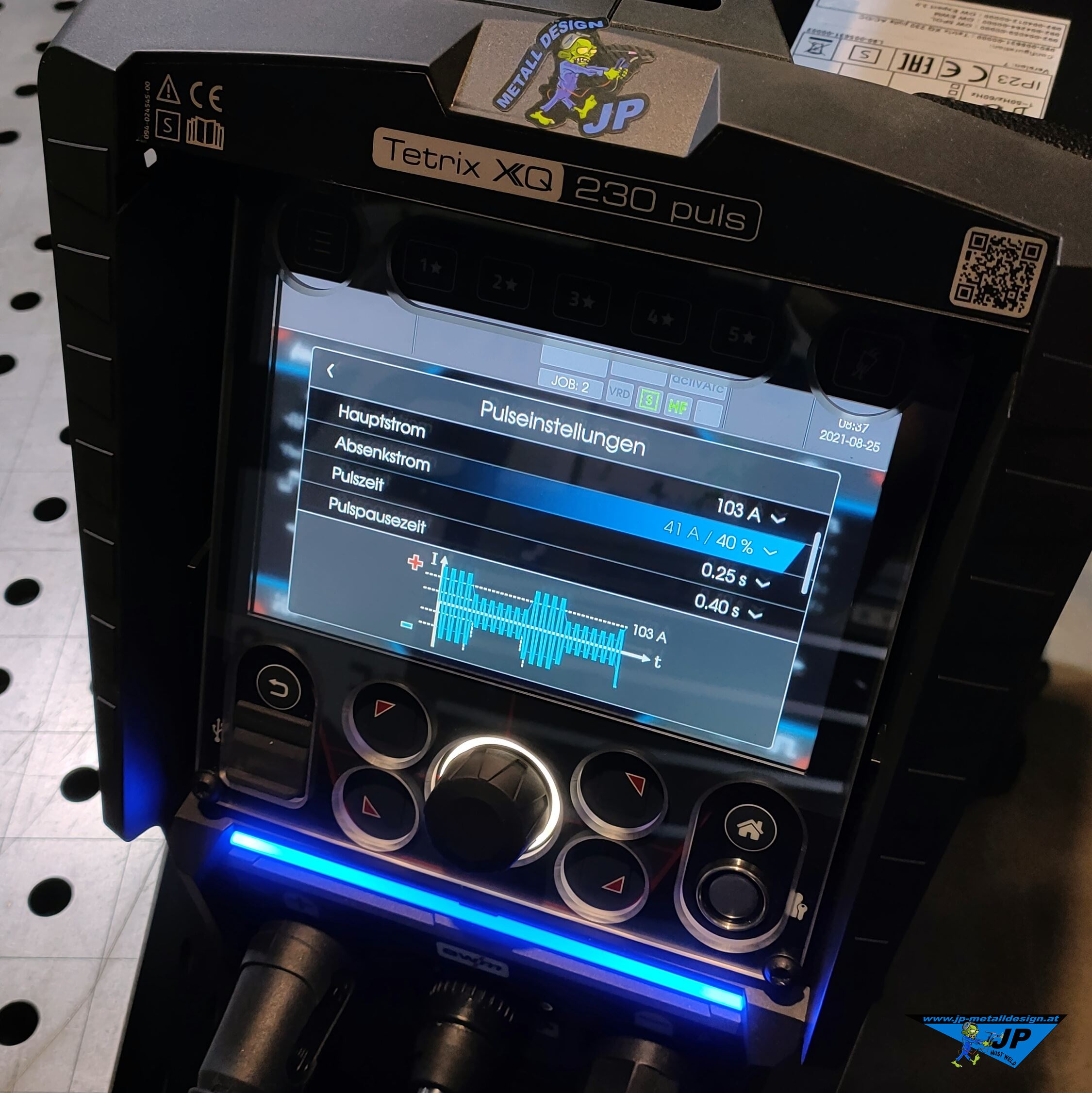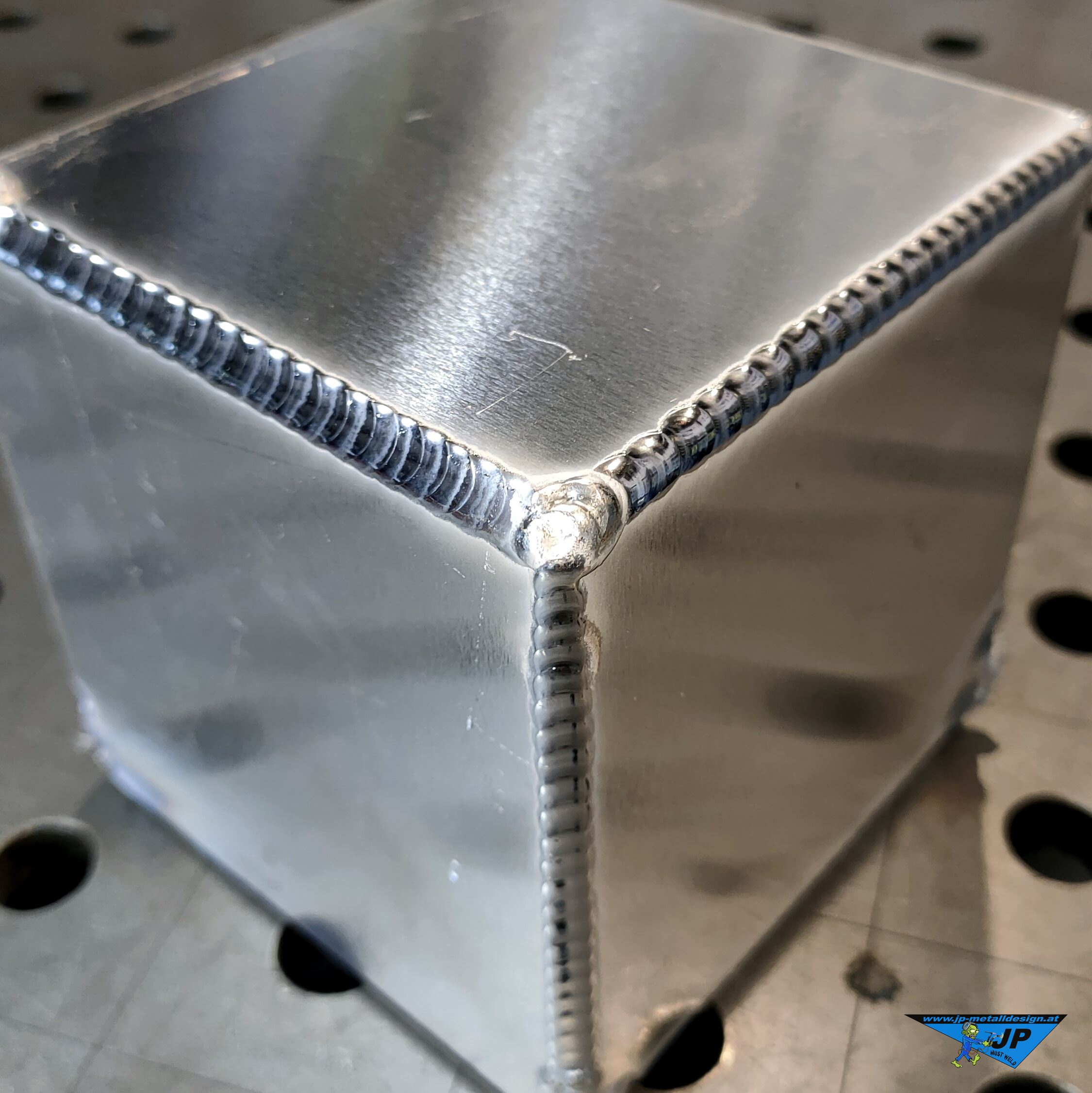I have been working with the EWM Tetrix 230 puls AC/DC Comfort 2.0 for the last two years. It’s a solid, sophisticated machine that has slowly become one of the go-to machines over the years. The Tetrix XQ was introduced at the “Schweißen Linz 2019” trade fair where visitors got the chance to take a look at the first version and go through the menu. It was clear to me then that the new operating concept and large display would significantly improve and facilitate the machine control for its users. .

Just a little while later and now it’s here: the new EWM Tetrix XQ 230 puls AC/DC Expert 3.0. The set-up was quick and easy. With the cooling unit, it was immediately noticeable that this had been revised.
Now it is:
- much smaller
- the air is sucked in from the back and blown back out from the side
- the connection to the machine is no longer via a plug outside of the casing, but instead via the upper part of the cooling unit casing or lower machine casing
- the quick connect couplings for the connection between the machine and the cooling unit have now been replaced by screw connections
The machine’s large display immediately leaps out, now integrated at a slight angle. This gives users a great viewing angle when standing in front of the machine. The slanted front corner also gives the machine a new look, allowing users to spot the new version from afar and from the side.

The handle now comes with an integrated compartment. It can be used for storing consumables so that they are always to hand when using the machine. This is practical for when users need to quickly take the machine from the trolley to the construction site.

The new EXPERT 3.0 control is easy and intuitive to use, featuring a click wheel and four buttons for the menus in the middle. On the left is the “Back” button and on the right, the “Home” button. Above these are the main menu, the favourites buttons and the gas test. For commonly used welding settings, users only need the click wheel, the four menu buttons and the “Back” button. For more advanced settings, such as system settings, special parameters and system information, users can use the main menu.
Thanks to the intuitive controls, it’s easy to get the hang of, allowing users to quickly navigate through the most frequent parameters.
I immediately noticed that the two slope times could now be set quickly and easily.
- ts1 – time from i1 to i2
- ts 2 – time from i2 to i1
I think this is really cool and it gives me a lot more freedom. For pulsing between two currents, I can now set how softly/quickly the switch between currents is. The parameter can be set from 0 to 20 seconds. The main screen on the display can also be adapted by the user. Certain parameters can be displayed or hidden. Additional information windows (pulse parameters, AC parameters) can be fixed in place. This allows users to adapt the machine to their requirements.
They can also save and quickly reload their most frequently used settings using the five favourites buttons. A total of 100 JOBs can be saved and transferred to another machine via the USB interface. Users can also take screenshots of the display and save them to the USB flash drive to be transferred to a PC. This makes communicating any settings-related issues, problems or error messages to the service team so much easier.
The display now offers graphic support for some settings. For example, when adjusting the pulse, the display shows the curve and how it changes according to the settings.

The machine comes with the eight-metre long EWM RETOX welding torch. In addition to the up/down function for the current, the display also shows this directly on the torch. I now have enough range for larger sculptures and can set the current directly on the welding torch without having to keep going back to the machine.

I use the original workshop trolley with the machine. This is because it’s sturdy, offers plenty of space for my 50-litre shielding gas cylinder and comes with a hose holder on both sides. The base plate and gap between the wheels are large, meaning it’s almost impossible for the machine to tilt or fall over. The large wheels also mean that any small debris or obstructions on the ground, such as cables, are no problem.
I largely weld thin material (stainless steel/steel/aluminium). The machine ignites very well, even at very low currents, and has a stable arc. In this feature, I have tried to give you my personal impression of the welding machine, including things that I noticed or which were important. There are many more details, innovations and improvements to the new Tetrix XQ that I haven’t touched on. It would be almost impossible to summarise everything into just a few lines.
It’s clear to see with this machine, though, that a lot of thought has gone into creating simple, efficient controls, and it’s a real success. Just by working with the machine for a short while, you soon notice that the controls are well-designed, right down to the finer details.
 |
 |
 |
 |